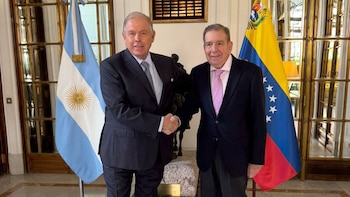
The World Athletics Council has approved new regulations in regards to athletic shoes. The issue of athletic shoe technology has dominated conversations in athletics circles over the last few years, leading to calls for greater regulation in the sport.
The new regulations will replace transitional rules guiding athletic shoes that were established in 2020 and 2021, and set to expire on December 31, 2021. The new regulations will come into effect on January 1, 2022.
One of the key regulations provided for in the amended technical rules is the new limitations placed on shoe sole thickness. Under the current transitional rules, sole thickness was limited to a stack height of 20 to 25 millimeters for track events, while a sole thickness of up to 40 millimeters was allowed for road events.
Under the amended regulations, the maximum sole thickness will be limited to a stack height of 20 millimeters for all track and field events. Crucially, these particular regulation won’t replace the current transitional one at the Paris 2024 Summer Olympics, but on November 1, 2024.
Some of the other regulation changes made in regards to athletics shoes include further clarification on how shoes will be checked for compliance, and how World Athletics will police infringements to the amended rules.
World Athletics also provided clarification on permissible customizations, allowing “adaptations for individual athletes on medical and safety grounds.” A decision was also taken to ban “sensing or intelligent” technology in the present and future. World Athletics did clarify that this ban does not apply to the use of heart rate monitors, speed distance monitors, and similar technology.

Commenting on the new regulations, Chief Executive of World Athletics, Jon Ridgeon, stated, “there has been an enormous amount of background work and meetings held both internally and externally on our shoe rules since the inception of the Working Group on Athletic Shoes in June 2020, following on from the work in 2019 of its predecessor, the Assistance Review Group.”
“There is still more to do but I would like to thank the Working Group, the World Federation of the Sporting Goods Industry (WFSGI) and the shoe companies for their openness and collaboration in finding solutions that help support innovation on the one hand while ensuring innovation in shoe technology does not create unfairness or a paradigm shift in athletic performances on the other.”
World Athletics stated that the purpose of its Working Group on Athletic Shoes had been to find long-term sustainable and implementable solutions for athletic shoes that also balanced innovation and fairness.
The issue of shoe technology came further under the microscope after comments made by Karsten Warholm, Olympic Champion and world record holder in the 400m hurdles, following his victory at the Tokyo 2020 Summer Olympics.
Warholm warned that advancements in shoe technology could harm the credibility of sport. He stated, “When somebody does a great performance now, everybody will question if it’s the shoe, and that is the credibility problem.”
“Hopefully somebody is doing the research and hopefully World Athletics are there to protect both athletes but also the audience.

He added, “People sitting at home. I don’t want them to feel like they’ve been fooled or tricked. I want there to be credibility. And that’s what I feel the sport of track and field is all about. You can compare things.”
Warholm also maintained that he’s not against technological advancements in sports, commenting, “I’m all for technology pushing it a little bit forward, in all sports.”
It would seem that World Athletics largely shares Warholm’s sentiments, approving tighter regulations on shoe technology, while vowing to continue “dialogue with the shoe manufacturing industry on a regular basis in 2022 and beyond.”
The issue of shoe technology likely won’t disappear for the next few seasons either, with the postponed 2022 World Athletics Championships slated to be held in Eugene, Oregon; a city closely associated with athletic shoe giant Nike.
Whether or not further amendments will be made to World Athletics’ regulations regarding shoe technology remains to be seen. Regardless of future decisions, it is clear that athletes will have to do a lot less sole searching in the future.
Últimas Noticias
Sinner-Alcaraz, the duel that came to succeed the three phenomenons
Beyond the final result, Roland Garros left the feeling that the Italian and the Spaniard will shape the great duel that came to help us through the duel for the end of the Federer-Nadal-Djokovic era.
Table tennis: Brazil’s Bruna Costa Alexandre will be Olympic and Paralympic in Paris 2024
She is the third in her sport and the seventh athlete to achieve it in the same edition; in Santiago 2023 she was the first athlete with disabilities to compete at the Pan American level and won a medal.

Rugby 7s: the best player of 2023 would only play the medal match in Paris
Argentinian Rodrigo Isgró received a five-game suspension for an indiscipline in the circuit’s decisive clash that would exclude him until the final or the bronze match; the Federation will seek to make the appeal successful.

Rhonex Kipruto, owner of the world record for the 10000 meters on the road, was suspended for six years
The Kenyan received the maximum sanction for irregularities in his biological passport and the Court considered that he was part of a system of “deliberate and sophisticated doping” to improve his performance. He will lose his record and the bronze medal at the Doha World Cup.

Katie Ledecky spoke about doping Chinese swimmers: “It’s difficult to go to Paris knowing that we’re going to compete with some of these athletes”
The American, a seven-time Olympic champion, referred to the case of the 23 positive controls before the Tokyo Games that were announced a few weeks ago and shook the swimming world. “I think our faith in some of the systems is at an all-time low,” he said.





